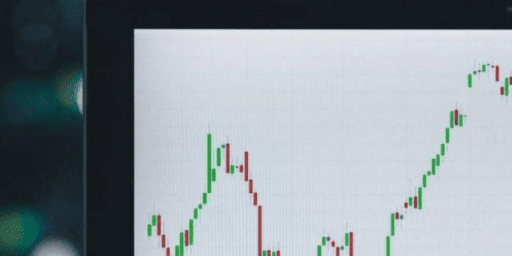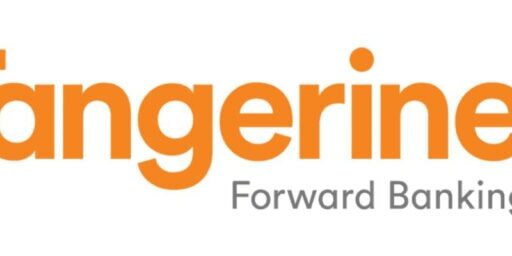Smith Manoeuvre/Dividend Portfolio Update – Q1 2015 Update – The Oil Plunge!
For those of you just joining us, listed below is my portfolio that is leveraged with money borrowed from my home equity line of credit (HELOC). As the money borrowed is used to invest, the interest charged is tax deductible. I started this portfolio in 2008 (at the height of the market) and write updates every quarter (or so) to show new positions added along with any market gains/losses. For more details on the strategy and procedure, check out my modified smith manoeuvre strategy and my comparison of online stock brokerages.
Since the last update (August 2014), oil prices have plunged about 50% which has heavily impacted this portfolio (see numbers below). While I realized that this portfolio was heavy in energy stocks, what I didn’t pay much attention to is how much of my portfolio was in energy “services”. Companies in my portfolio like Ensign Energy, Calfrac Well Services, Pason Systems and Mullen Group, are all in that category, which were hit the hardest from the energy market sell off.
What am I going to do? While some investors would sell off energy services stocks, they have maintained their dividend (so far), which means I will continue to hold. In fact, I’ve added to my Pason Systems position. What allows me to be patient during times like this is my focus dividend income rather than portfolio value. While it still hurts to see the portfolio fluctuate manically to the downside, I believe that it will recover over time.
New/Added positions:
- No new positions in this portfolio. I have been initiating new positions to my corporate dividend portfolio instead.
- I added to my Pason Systems position.
Dividend growth:
Since this portfolio is focused on dividend growth stocks, the portfolio did not disappoint where a significant number of dividend paying positions increased their distributions since the last update. The dividend increases came from:
- CIBC (CM), Bank of Montreal (BMO), Royal Bank (RY), TD Bank (TD), Scotia Bank (BNS), Fortis Properties (FTS), Manulife Financials (MFC), TransCanada Corp (TRP), Enbridge (ENB), First Capital Realty (FCR), Canadian Utilities (CU), Ensign Energy Services (ESI), Rogers (RCI.B), Pason Systems (PSI), Corus Entertainment (CJR.B), Thompson Reuters (TRI), SNC Lavalin (SNC), Potash Corp (POT), Emera (EMA), and BCE Inc (BCE).
Dividend Cuts:
One thing I do not like to see in this portfolio are dividend cuts. Some energy stocks had high yields even before the oil correction, so some dividend cuts were inevitable. Some of these cuts include:
- Canadian Oil Sands ($1.40 to $0.20);
- Baytex Energy ($2.88 to $1.20); and,
- Major Drilling Group ($0.10 to $0.04).
Watch List:
My dividend watch list remains similar where I am looking to increase my positions in CU, IMO, SNC (pricing is starting to get attractive), TD and possibly add new positions in Cineplex (CGX), and Canadian National Railway (CNR) when/if their valuations become attractive (let me know if there are any ideas that I’m missing out on).
Despite the large dividend cuts and no new capital added to the account (cash generated from dividends are used to reinvest), as of today, this portfolio generates about $5,635 / year in Canadian eligible dividends, compared to around $5,603 in the fall.
In the near future, I may provide portfolio income updates based on all portfolios to get a better idea of our journey towards financial freedom.
The Smith Manoeuvre Portfolio as of March 9, 2015 (prior to open) – note that any changes to the portfolio are indicated in bold. Also note that the yield displayed below is the “yield on cost” which is the current dividend rate on my original cost. I display this to illustrate the power of dividend growth over time.
| Stock | Symbol | Shares | Avg Buy Price | Total | Div/Share | Yield |
| Royal Bank | RY.T | 100 | $48.39 | $4,838.99 | $3.08 | 6.36% |
| CIBC | CM.T | 45 | $67.14 | $3,021.25 | $4.24 | 6.32% |
| Power Financial | PWF.T | 155 | $32.11 | $4,976.64 | $1.40 | 4.36% |
| Scotia Bank | BNS.T | 105 | $41.91 | $4,400.52 | $2.72 | 6.49% |
| Manulife Financial | MFC.T | 125 | $33.12 | $4,139.48 | $0.62 | 1.87% |
| Fortis Properties | FTS.T | 150 | $25.63 | $3,843.98 | $1.36 | 5.31% |
| TransCanada Corp | TRP.T | 100 | $33.50 | $3,349.74 | $2.08 | 6.21% |
| AGF Management Limited | AGF.B.T | 50 | $22.71 | $1,135.49 | $1.08 | 4.76% |
| Bank of Montreal | BMO.T | 45 | $54.97 | $2,473.83 | $3.20 | 5.82% |
| Husky Energy | HSE.T | 135 | $32.53 | $4,391.27 | $1.20 | 3.69% |
| TD Bank | TD.T | 100 | $24.12 | $2,412.23 | $2.04 | 8.46% |
| Enbridge | ENB.T | 130 | $28.39 | $3,690.38 | $1.86 | 6.55% |
| TransAlta | TA.T | 50 | $21.47 | $1,073.49 | $0.72 | 3.35% |
| First Capital Realty | FCR.T | 222 | $11.72 | $2,601.03 | $0.86 | 7.34% |
| Canadian Utilities | CU.T | 100 | $18.20 | $1,819.99 | $1.18 | 6.48% |
| Ensign Energy Services | ESI.T | 200 | $14.98 | $2,995.98 | $0.48 | 3.29% |
| Mullen Group | MTL.T | 200 | $17.98 | $3,596.97 | $1.20 | 6.67% |
| Rogers Communications | RCI.B.T | 125 | $36.25 | $4,530.97 | $1.92 | 5.30% |
| George Westin Ltd | WN.T | 50 | $68.64 | $3,441.99 | $1.68 | 2.44% |
| Pason Systems | PSI.T | 250 | $15.59 | $3,897.97 | $0.68 | 4.36% |
| Corus Entertainment | CJR.B.T | 150 | $21.67 | $3,250.98 | $1.14 | 5.26% |
| Thompson Reuters | TRI.T | 90 | $33.40 | $3,006.18 | $1.34 | 4.01% |
| Canadian Pacific Railway | CP.T | 30 | $54.23 | $1,626.99 | $1.40 | 2.58% |
| Canadian Oil Sands | COS.T | 150 | $19.14 | $2,871.48 | $0.20 | 1.04% |
| Leons Furniture | LNF.T | 200 | $12.06 | $2,412.98 | $0.40 | 3.32% |
| Encana | ECA.T | 100 | $18.82 | $1,881.99 | $0.28 | 1.49% |
| Transcontinental | TCL.A.T | 200 | $11.32 | $2,263.98 | $0.64 | 5.65% |
| Calfrac Well Services | CFW.T | 300 | $12.12 | $3,635.98 | $0.50 | 4.13% |
| Baytex Energy Corp |
BTE.T | 35 | $42.98 | $1,504.14 | $1.20 | 2.79% |
| Finning International | FTT.T | 200 | $22.95 | $4,589.98 | $0.71 | 3.09% |
| SNC Lavalin Group | SNC.T | 50 | $38.55 | $1,927.49 | $1.00 | 2.59% |
| Crescent Point Energy | CPG.T | 50 | $37.13 | $1,856.49 | $2.76 | 7.43% |
| Bird Construction | BDT.T | 250 | $13.12 | $3,280.98 | $0.76 | 5.79% |
| Calian Technologies | CTY.T | 150 | $20.55 | $3,082.98 | $1.12 | 5.45% |
| Imperial Oil | IMO.T | 50 | $42.81 | $2,140.49 | $0.52 | 1.21% |
| Potash Corp | POT.T | 100 | $37.64 | $3,763.98 | $1.52 | 4.04% |
| Emera Inc | EMA.T | 100 | $31.05 | $3,104.98 | $1.60 | 5.15% |
| BCE Inc | BCE.T | 50 | $41.68 | $2,083.99 | $2.60 | 6.24% |
| Major Drilling Group | MDI.T | 450 | $7.71 | $3,467.98 | $0.04 | 0.52% |
| Bombardier Inc | BBD.B.T | 600 | $3.58 | $2,145.99 | $0.10 | 2.80% |
| Teck Resources | TCK.B | 100 | $25.58 | $2,567.99 | $0.90 | 3.50% |
More Stats
- Total Cost Base of Equities (inc. fees): $124,486 (vs. $121,996)
- Market Value of Portfolio: $153,981 (vs. $164,701)
- Total Dividends / Year: $5,635 (vs. $5,603.03)
- Portfolio Dividend Yield on Cost: 4.53% (vs. 4.59%)
- Portfolio Dividend Yield: 3.72%
Sector Allocation (based on market value)
- Financials: 24.03% (vs. 23.12%)
- Utilities: 9.63% (vs. 7.79%)
- Energy: 25.51% (vs. 30.38%)
- Resources: 3.10% (vs. 4.04%)
- Real Estate: 2.88% (vs. 2.56%)
- Consumer/Telecom: 14.98% (vs. 13.19%)
- Other: 19.87% (vs. 18.91%)
Common Questions:
Why the high concentration in financials and energy?
With regards to sector allocation, you may notice that this portfolio is fairly concentrated in financials and energy. Note though that this is one of my accounts where I treat all of my accounts as one big portfolio. In other words, I consider this account to be my Canadian exposure (which is mostly financials and energy) and my US, international and other sector equity exposure in other accounts.
Why don’t you use a dividend ETF instead?
Couple of reasons, first, most Canadian dividend ETFs hold stocks that distribute return of capital which can affect the tax deductibility of the investment loan. Second, the MER eats into the dividend. I keep the expenses in this portfolio very low through occasional buying but rarely selling.
Should I start the Smith Manoeuvre?
There have been a lot of readers who have mentioned that they are interested in a leveraged portfolio. Over the long term it may be lucrative. However, over the short term, equities are volatile and can put the portfolio deep in the red. My portfolio during 2008 is a prime example of what can happen. If you can’t stomach losing 20-30% in the portfolio in any given year, then your risk tolerance isn’t suited for leveraged investing. Here is an article I wrote answering a reader question “Should I Start the Smith Manoeuvre?”
Disclaimer: The securities mentioned in this post are not recommendations to buy or sell and should be used for informational purposes only.
I've Completed My Million Dollar Journey. Let Me Guide You Through Yours!
Sign up below to get a copy of our free eBook: Can I Retire Yet?










Great articles. I really enjoy your blog. Just curious, what do you use to buy stocks? Discount brokerage or through your bank? You might have written an article on this, but I’m curious to know what you think of all the different ways to buy stocks and which one(s) you think are good.
Cheers
Hi Marty, this may help: https://milliondollarjourney.com/review-canadian-discount-brokerages.htm
Has anyone looked at TSE:DS (Dividend Select 15 Corp) as a faster way of converting your mortgage to investment loan?
It has been yielding around 10%.. ~5% from dividends and 5% from options trading. Looks like all distributions are in the form of dividends.
Resources are the riskiest sector to invest in. Generally not wise to have more than 15-20% of a portfolio in resources. Oil could stay low for a long time, the Saudis keep pumping and world growth is slowing… Better to diversify and have more money in Consumer stocks, finance,manufacturing and utilities. Stick with the blue chips. You will be happy with the results.
Great blog! Is there a place where we can see your overall investment strategy (% of your portfolio in dividend stocks vs etf vs anything else?)
Thank you for sharing your Journey!
Hi,
This may have been answered in a previous post and if so I appologise for asking the question, what is the typical rate you are getting on the home equity line of credit?
While I’m aware that the money is tax deductable some of the rates appear high (Tangerine looks good at 3.5%) although that’s as a result of obviously prime being exceptionally low, so would go up in the future.
I’ve used the Smith Manoeuvre fairly successfully as a few years back I was fortunate enough to secure a 10-year fixed loan at 2.3%. I do fear that a number of people might be getting variable LOC and the rates they are paying could potentially increase in the future…..
While the interest is tax deductable the rate a person is paying on the ‘HELOC’ is obviously a key to the success of this strategy. It’s refreshing that you’ve inluded the line ‘If you can’t stomach losing 20-30% in the portfolio in any given year, then your risk tolerance isn’t suited for leveraged investing’ as some lesser blogs would not point that out.
Keep Up the good work……
Hi Paul, my HELOC rate is at prime and has fortunately remained at prime (2.85% right now). Yes, i’m an advocate of leveraged investing IF the investor has the risk tolerance and discipline for the strategy. It’s one thing to lose money in the stock market, but amplified many times when losing money in the stock market with BORROWED money.
May I ask, anyone willing to answer, the following question regarding any general patterns with respect to WHEN dividend cuts might come…in relation to stock pricing?
For example: Obviously a dividend cut will “generally” come AFTER a drop in share price (for whatever reasons, just speaking generally).
I often hear many individuals who would call themselves “Dividend Growth Investors” reference a portion of their “strategy” to often include purchasing shares in companies that have increased dividends by some amount for a certain amount of time.
Generally, they also refer to a company cutting its dividends as a part of their criteria indicating that it’s time to sell (because they’ve now decided that said company is not REALLY dedicated to growing its dividend, and therefore is no longer suited to the DGI.
The problem being, the realization of the cut is generally only seen AFTER an accompanying hefty capital loss on the market value of said shares.
– How do DGIs “deal” here “generally”?
– Take the loss of dividend and sell for a large capital loss?
– Attempt to wait for the market value to return (and just accept the low dividend until the share price comes back up to even?
– Does a dividend cut “generally” speed up the company’s ability to raise share price back due to them having more cash (by paying less dividend?)
– Is a company like this “forever” ignored in the coming years, even if they reinstate the dividend?
I know everyone’s “plans” are going to vary, so I’m just looking for some opinions!
Thanks!
Justin, I think it really depends on the investor and the company itself. Dividend cuts do not happen often for true dividend growth all-stars, but it does happen. The one example I can think of is MFC in 2008/2009 where they reduced their dividend. I held onto the company due to the fact that believed that they would recover someday (still waiting). :) On the other hand, TCK.B which I believe eliminated their dividend, so I sold that position.
If you are a DGI, then best to stick with companies that have a long track record if growing their dividends.
Thank you for that reply, much appreciated!
As a fairly new investor myself, I haven’t had the opportunity to experience many ups and downs in the market. Could you provide any insight as to whether a dividend reduction / elimination comes:
• before a large drop in market price, (doubtful) or
• after a drop in market share price
In anyone’s experience, does the “free’d – up” extra cash tend to speed up, or help normalize (bring share price back up) any faster? Faster than – for example – a company in the same sector and industry.
For example: if Cenovus were to cut its dividend now, what effect on market share price (all else being equal) might that have…compared (for example) to suncor, supposing it did NOT cut its dividend?
Effects now? A year from now?
Thank you anyone for any wisdom and experience. I know that “past performance is no indication of future performance,” but you know what I mean, hopefully Lol :)
@Justin Bouchard, there are no hard and fast rules. Generally speaking, if the dividend company “surprises” the market with a dividend reduction, then the stock will generally go down. However, if the market expects a dividend cut (which will be priced into the stock price) because it will result in a more sustainable business, and the cut happens, then the stock may ignite again and start a move upwards.
FT, I’m curious… if you were setting up your SM account today, would you consider VDY now that it exists? Seems to me like the very low MER (0.3%) and microscopic amount of ROC are more than offset by the advantages of better diversification and the possibility of commission-free purchases for semi-monthly DCA. Not to mention overall simplicity and time savings managing the portfolio!
I’m a long time MDJ lurker and hardcore passive indexer. TBH, I find it perplexing that we have all drank the kool-aid with regards to actively managed mutual funds vs passive indexes, but for some reason, the group-think here favors individual stock picking for a dividend SM account. We seem to all be somewhat hypocritical on this… The index should outperform stock picking in the long run, no?
Very valid points. I think that VDY is a great product. If you are comfortable with dealing with the ROC and a leveraged investment account, then go for it. For me, I’m comfortable with holding individual securities. However, a number of my non-leveraged portfolios are indexed, RESPs, my wife’s accounts, and a portion of my RRSP.
Hi FT,
What’s your general comment or feeling on investing in dividends that are below your breakeven threshhold for the interest expense? Do you buy them with an expectation of growth over time? That capital gains will outpace sunk costs? That the other, higher dividends will make up for the drag?
Just curious…
Thanks,
MM
Hi MM,
Generally, I wait for strong dividend payers to have a yield between 3 to 5% before buying them. There are times when I may purchase lower yielding companies, but I like to ensure that the overall portfolio remains between 3 and 5%.
BBD shares have taken a hit and no longer pay a dividend. It might be worth noting (I’m a shareholder too.) Also, I appreciate how you are sharing your real life example of the Smith Maneuver and how it can be implemented. The knowledge I’ve gained has definitely increased my confidence for when/if I ever take the plunge into the wonderful world of leveraged investing.
Thanks!
Thanks for the update Steve. I picked up BBD mostly on speculation, I will be reviewing this holding in the portfolio, and perhaps reduce or cut it. Same for tck.b.
Keep staying the course FT, you know this much better than most :)
Great work as usual and thanks for the update.
Mark